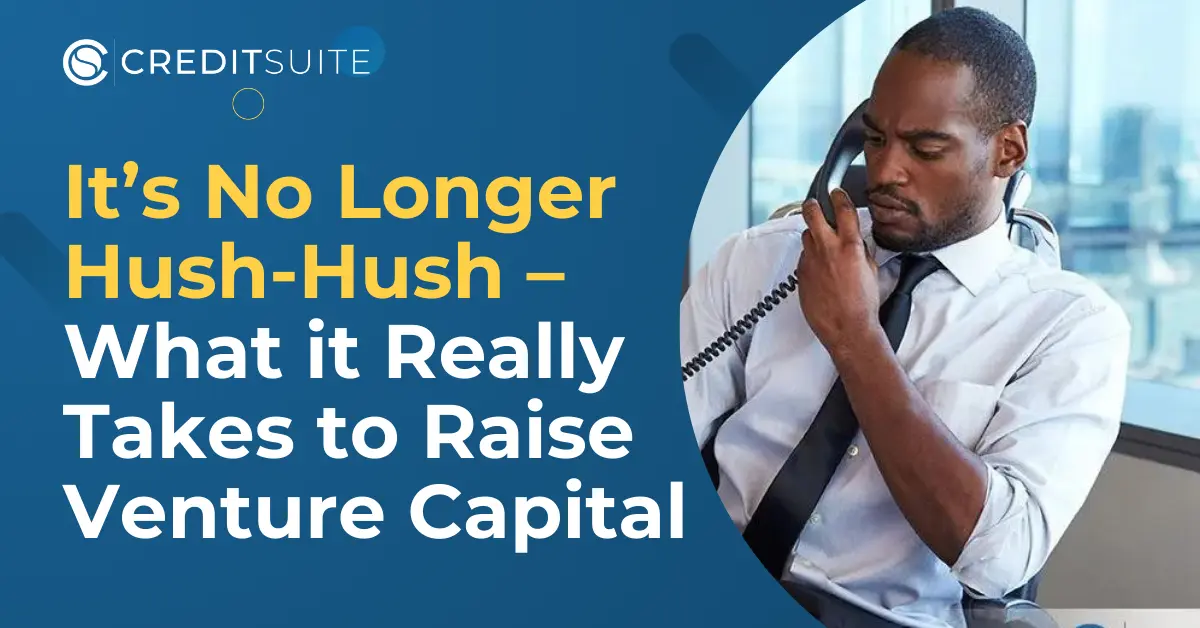Find out What it REALLY Takes to Raise Venture Capital
Do you know what it really takes to raise venture capital? Do you wonder if venture capital investment is right for your business? Then read on.
Getting the working capital you need to grow your company doesn’t have to be too hard. Lots of businesses these days turn to venture capitalists. These options can work for startup ventures. But there are details you should know.
What it Really Takes to Raise Venture Capital: What Venture Capitalists Are
 First off you might be wondering, just what is a venture capitalist?
First off you might be wondering, just what is a venture capitalist?
According to Investopedia:
“A venture capitalist is an investor who either provides capital to startup ventures or supports small companies that wish to expand but do not have access to equities markets. Venture capitalists are willing to invest in such companies because they can earn a massive return on their investments if these companies are a success.”
Venture Capitalists will give money to help build new startups. But this is if the VCs believe a company has both high-growth and high-risk potential. These tend to be fast-growth companies with an exit strategy already in place.
Venture capitalists will often look to recover their investment within a 3-5 year time frame. They will also, often, want to own a large piece of a company if not a controlling stake. People like Jeff Clavier do both, probably depending on the amount of risk and the expected amount of return. Clavier is the most prolific angel investor of all time and is also a VC.
Well-Known VCs
Apart from Clavier, other well-known venture capitalists include: Twitter investor Peter Fenton; PayPal’s cofounder, Peter Theiland; Chris Sacca, an early investor in both Twitter and Uber; Facebook’s first investor, Jeremy Levine (also Pinterest’s largest investor); and early Facebook investor Jim Breyer.
So why did those VCs invest in those particular properties?
What it Really Takes to Raise Venture Capital: What Venture Capitalists Look For
Venture capitalists look for a strong management team. They also want to see a large potential market and a unique product or service with a strong competitive advantage.
And they also seek opportunities in industries they have familiarity with. These are where they would have the chance to own a large percent of the company, so they can influence its direction.
This is because the downsides for venture capitalists can be pretty bad. Venture capitalists can experience significant losses if their picks fail. However, these investors are typically wealthy.
And they are often so wealthy that they can afford to take the risks associated with funding young and unproven companies, so long as they seem to have a great idea and a great management team.
Hence a VC will look for a company which seems to have potential. The VC typically has enough wealth to be able to take chances. But these are not foolish chances. Rather, the venture capitalist does some investigating and looks to invest responsibly. They don’t want to lose their shirts.
What it Really Takes to Raise Venture Capital: Where the Money Comes From
Venture capital firms manage a fund created from pooled money. These funds come from the venture capital firm itself. Or they might come from wealthy persons; pension funds; foundations; insurance carriers; and corporate pension funds, etc.
All partners within a VC firm have part ownership over the fund. But the VC firm controls where the fund is invested. Investments are usually into businesses or ventures which most banks or capital markets would consider too risky for an investment.
The venture capital firm serves as the general partner. The insurance companies, pension funds, etc. are all limited partners.
Venture capital fund managers are paid with management fees and carried interest. Depending on the VC firm, about 20% of the profits go to the company managing the private equity fund. And the rest goes to the limited partners who invested into the fund. General partners usually get an additional 2% fee.
What it Really Takes to Raise Venture Capital: The Sorts of Companies VCs Typically Invest In
Many ideas are worthy of some type of investment. But they are not necessarily worthy of a venture investment.
Venture capitalists are looking to invest millions of dollars! They are also looking for multiple times return on that capital. So VCs will focus on how experienced and promising the company’s founders are and how big the market is (or can be).
If they don’t think the market will be big enough, then they aren’t going to want to invest.
As a result, if you’ve got a company in a smaller market, then you’ll do better to look for angel investors instead. Angels will typically invest in early-stage or startup companies in exchange for a 20 – 25% return on their investment. But unlike VCs, angel investors tend to invest less, and will also want less control.
What it Really Takes to Raise Venture Capital: Where in the Funding Cycle the VCs Will Invest
It pays to understand the stages of funding, because venture funding comes in stages and not all at once. Usually, there are six stages. These more or less correspond to these stages of a company’s development.
Seed funding
This is the earliest round of financing needed to prove a new idea. Funding often comes from angel investors or, lately, from equity crowdfunding.
Start-up
These are early stage firms which need funding for their expenses from marketing and product development.
Growth (Series A round)
These are early sales and manufacturing funds. This is typically where VCs will enter the picture, if they do at all. Series A is essentially the first institutional round. Here is where most companies will have the most growth.
Second-Round
This will be working capital for early stage companies which are selling product, but are not yet turning a profit.
Expansion
This is also called mezzanine financing. It is expansion money for a newly-profitable business.
Bridge Financing
Here is where a startup seeks funding between full VC rounds. The aim is to raise smaller amounts of money instead of a full round. However, usually the existing investors will participate.
VCs usually leave via a secondary sale, an IPO (initial public offering), or an acquisition.
https://creditsuite.wistia.com/medias/0gi219yz29?embedType=async&videoFoam=true&videoWidth=640
What it Really Takes to Raise Venture Capital: Venture Capital Investing Starts
It all starts with an introduction. VC firms tend to prefer actual in-person introductions via networking. This gives them a feel for whether your company has what it takes and whether you do as well.
They really do want to know you. So it’s not just a ‘meet, greet, and get a check’ sort of meeting. Instead, getting VC funding can take a while, particularly if you are a new entrepreneur. If you don’t have earlier successes under your belt already, then venture capitalists need some other reason to trust your judgment.
While VCs have the kind of financial backgrounds (usually) to be able to go out on a limb for investments, they want a reason to do so. They are not just going to rain money out of the sky for you. So they need to see how you work, and how you handle both crises and successes. Would you invest your money on vague promises from someone you didn’t know well?
I didn’t think so.
What it Really Takes to Raise Venture Capital: Who You Work With in a VC Firm
Companies need to find a lead partner. This lead partner is essentially your company’s champion within the firm. Your best way to connect with a lead partner is to focus on someone in the firm who has an interest in your particular industry.
If your company is looking to revolutionize the practice of law through automation, then you probably wouldn’t be able to find a VC with a specific focus on the law. And this is so even if there are partners with juris doctorate degrees. Rather, you would be looking to connect to a partner with an interest in automation or electronics or computing.
This means that, while VCs are trying to get to know you, you should be trying to get to know them. And it is meant to be a give and take partnership. Plastering every company in your town with your resume won’t get you a job. And by the same logic, pitching to every VC out there won’t get you funding.
You need to focus, and that means actively checking into VCs’ backgrounds. What does their firm biography say? Are they on LinkedIn or Twitter? Do they have publications you could read?
If you think this is a lot of homework, you would be right.
What it Really Takes to Raise Venture Capital: Getting to Funding
Get to know the funding process. A VC firm’s partners will meet to discuss whether they will fund your company, and for how much. You want to get to that meeting!
So, again, you’ll need to do your homework, and find out where and when those meetings are (often Mondays), and how to get in. They aren’t going to let in just anyone.
Seed stage funding will usually be for less and will require fewer meetings than Series A.
Term Sheets
If a venture capital firm is interested in funding your company, they will send you a ‘term sheet’. Term sheets are documents outlining all of the important economic and governing terms of the investment.
Often you’ll see the valuation of the company, board composition, investor rights, option pool, voting rights, etc. included in a term sheet.
A term sheet’s purpose is to cover all the vital business terms. Therefore, good term sheets will spell out everything and help everyone avoid surprises once the full documents have been drafted.
Always, always, always (did I mention always?) have an attorney review and negotiate them.
Due Diligence
VC firms will also want due diligence disclosure from you. That means your financials, any intellectual property materials (such as patents, trademarks, or copyrights), contracts, employment agreements and the like.
Again, the VCs don’t want to be in for any nasty surprises. They understandably want to know just what they are getting themselves into.
What it REALLY Takes to Raise Venture Capital
When done well, your company will thrive. And you’ll have new and positive relationships with people who can get you funding.
Venture capital funding isn’t for everyone But for those entrepreneurs and businesses where there is a good fit, the results can be exceptionally rewarding. Discover what it really takes to raise venture capital.

